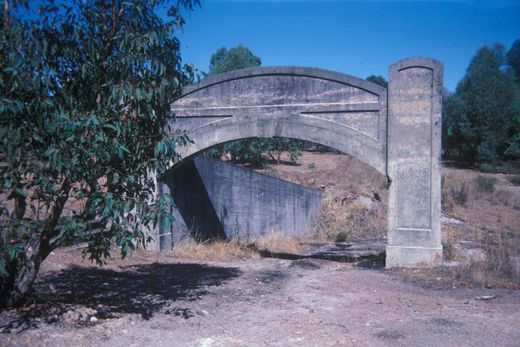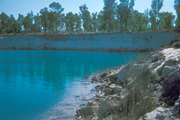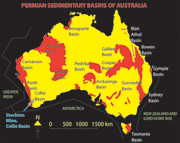Assemblages: The Ewington Coal Measures: Stockton Pit Flora
NRM holds around 19 specimens from the Stockton Pit collected in 1949 by Olof Selling. The slabs bear large equisetalean axis impressions (Paracalamites australis) and glossopterid leaf compressions (mostly Glossopteris ewingtonensis).
References
Rigby, J.F. 1966. The Lower Gondwana floras of the Perthand Collie Basins ,Western Australia. Palaeontographica 118B, 113-152.
Rigby, J., 1993. Plants. In: Skwarko, S.K. (Ed.), Palaeontology of the Permian of Western Australia. Geological Survey of Western Australia Bulletin 136, 77-83.
Rigby, J.F., Chandra, S. & Surange, K.R., 1988. Glossopterid plant remains in the Permian of Western Australia. Association of Australasian Palaeontologists Memoir 5, 73-78.

Abandoned entrance to the old Stockton underground mine, which closed in 1960. Photo: S. McLoughlin 1991.

The lake created after flooding of the Stockton open-cut coal pit is now used as a recreational area. Cliffs on the far side of the lake represent weathered exposures of the Lower Cretaceous Nakina Formation, which overlie the Permian coal measures across much of the Collie Basin. Photo: S. McLoughlin 1991.



